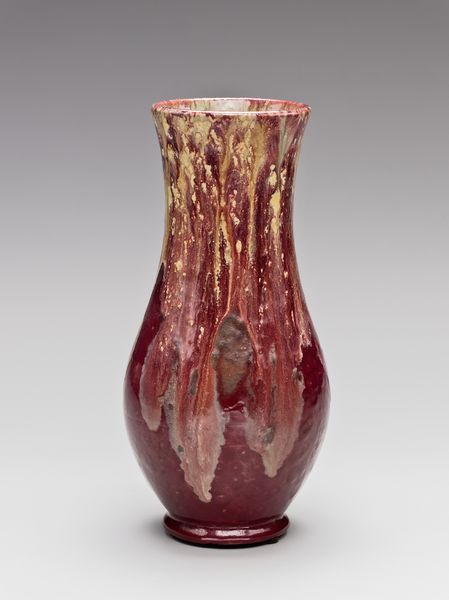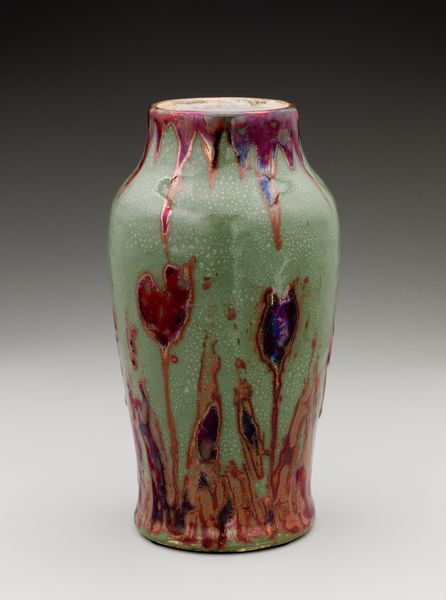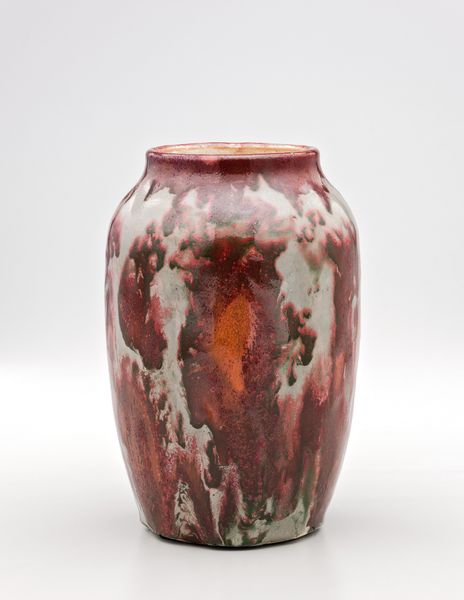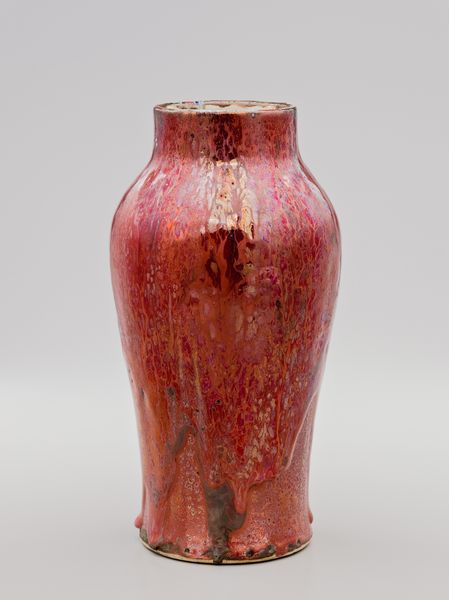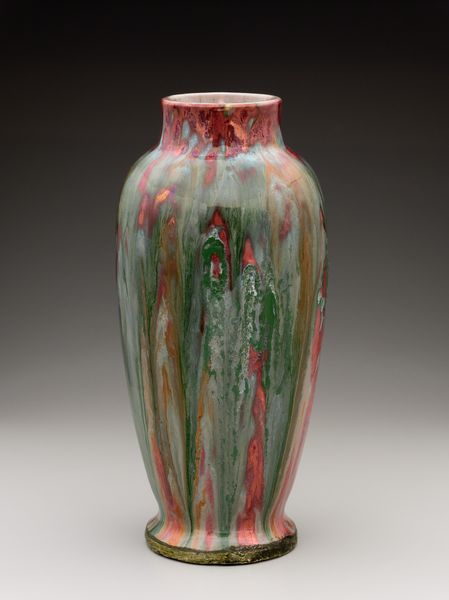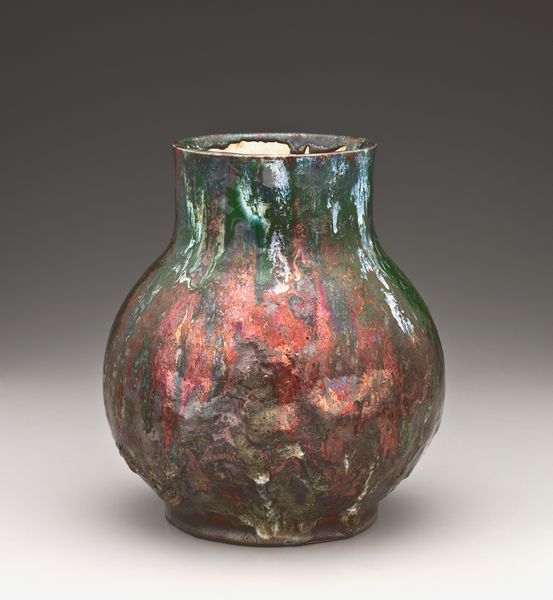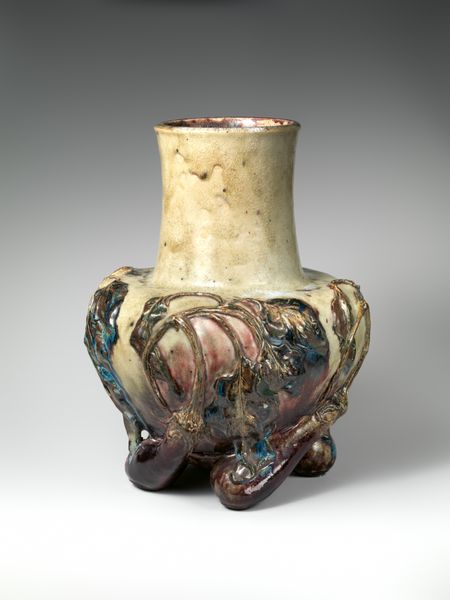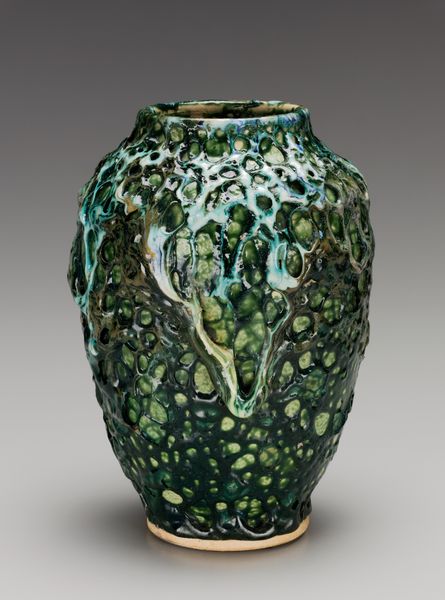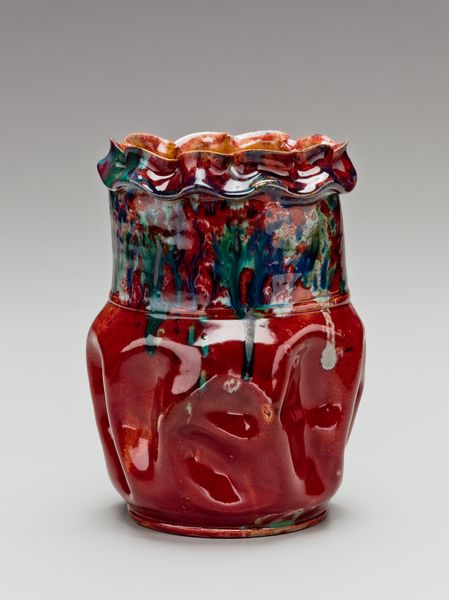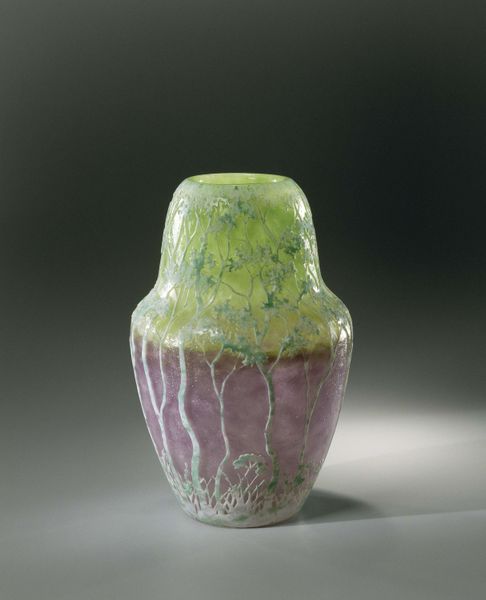
ceramic, earthenware, sculpture
#
arts-&-crafts-movement
#
ceramic
#
earthenware
#
stoneware
#
sculpture
#
ceramic
#
united-states
#
decorative-art
Dimensions: 7 1/8 in. (18.1 cm)
Copyright: Public Domain
Editor: Here we have a ceramic vase, created between 1893 and 1911 by Dedham Pottery. The texture is quite striking—almost volcanic, don't you think? What stands out to you? Curator: It's fascinating how Dedham Pottery elevates the act of making and glazing into the primary focus. The drips, the almost bubbly surface…it really draws attention to the transformation of the material. Consider the Arts and Crafts movement from which Dedham emerged. They were pushing back against industrial mass production. How might this piece represent that? Editor: So, you’re saying the *process* is almost as important as the vase itself? The maker’s mark isn't just about identifying the artist but also acknowledging the labor and skill involved. Curator: Precisely! The choice of earthenware itself is telling. It’s a common material, elevated through skillful craftsmanship. What does it tell us that this vessel is not mass produced, but likely individually made? Think about the cultural value placed on handmade objects during this period. Editor: It becomes a statement about valuing craftsmanship and resisting industrialization. And I suppose the almost "imperfect" glazing is part of that statement, too. It embraces the handmade aspect, rather than striving for a flawless, machine-made look. I never thought about pottery in that context! Curator: Exactly. The way Dedham Pottery embraces materiality and making allows us to see beyond the vase as just a container. It embodies a specific social and cultural critique. Editor: That's given me a lot to consider when looking at decorative arts. I'll never see a vase the same way again!
Comments
No comments
Be the first to comment and join the conversation on the ultimate creative platform.

